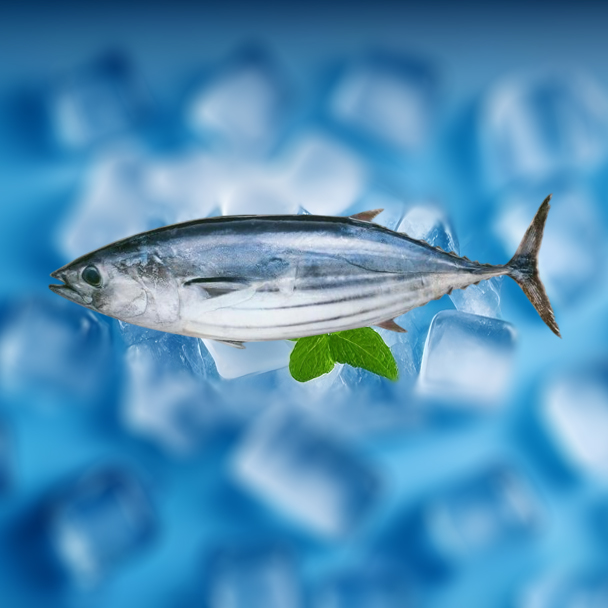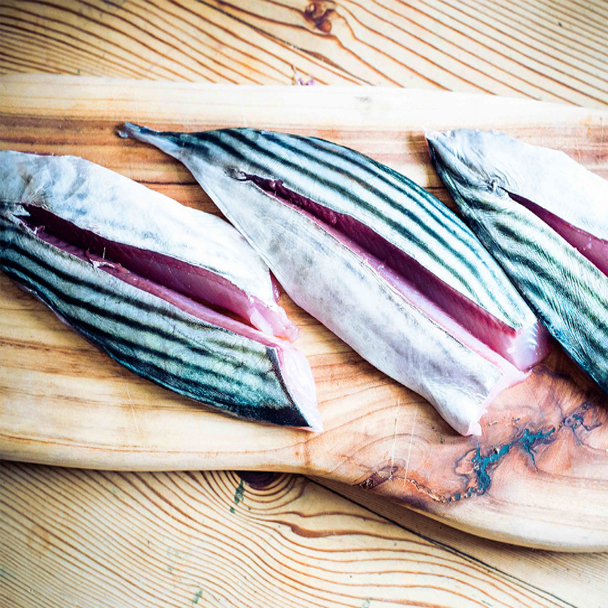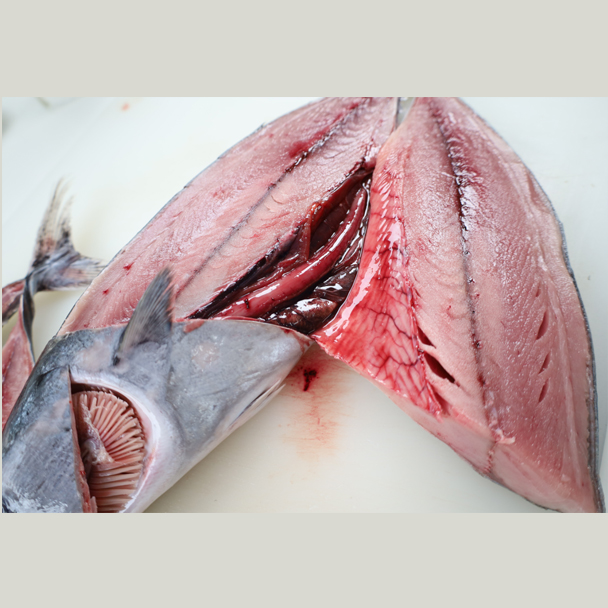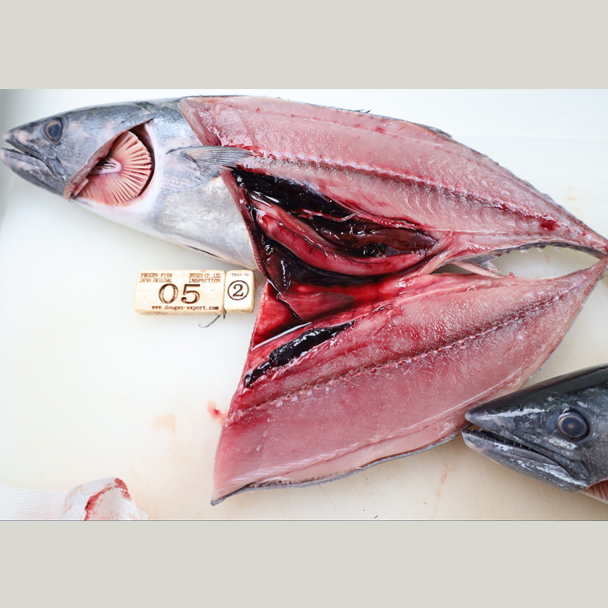








Eastern Little Tunny (Sarda orientalis), also known as Striped Bonito or “Hagatsuo” in Japanese, is a small to medium-sized migratory fish species belonging to the mackerel family (Scombridae). It is widely distributed across the Indo-Pacific region, including the coastal waters of Southeast China, Japan, Taiwan, and Southeast Asia.
The Eastern Little Tunny has a streamlined, torpedo-shaped body well adapted for fast swimming. Its back is dark blue to bluish-black, with several distinct oblique dark stripes along the silvery sides. It typically reaches a length of 30–50 cm, with a maximum size of around 70 cm. The name "Striped Bonito" comes from its characteristic body markings.
This species is highly social, often forming schools and inhabiting surface waters from coastal to offshore areas. It is an active predator, feeding on small fish, cephalopods, and crustaceans. Due to its strong migratory behavior, it often follows seasonal currents.
The flesh of Sarda orientalis is reddish, tender, and flavorful—somewhere between skipjack tuna and true tuna in taste and texture. It is suitable for a variety of culinary preparations, including sashimi, grilling, and simmered dishes. Because its skin peels easily, it is colloquially known in Japan as “peel-off fish” (ハガツオ).
Thanks to its delicious flavor, high protein content, and low fat, the Eastern Little Tunny holds significant value in both commercial fisheries and culinary markets.
